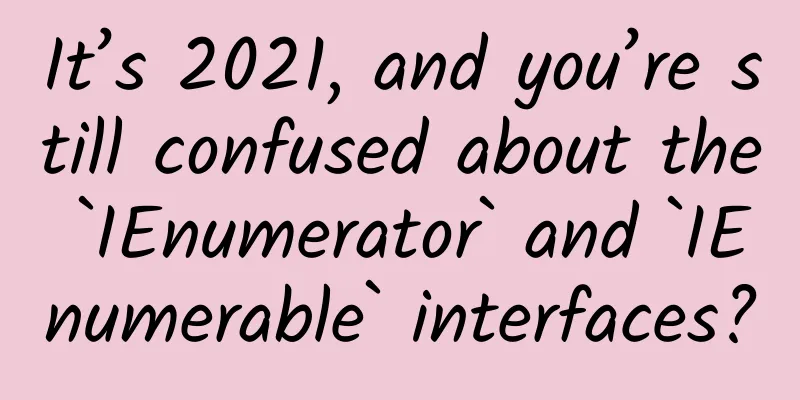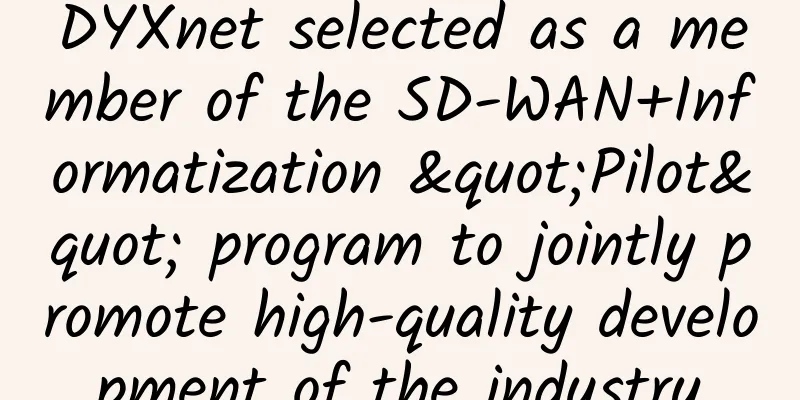It’s 2021, and you’re still confused about the `IEnumerator` and `IEnumerable` interfaces?

|
This article is reprinted from the WeChat public account "Full Stack Coder Portrait", the author is Xiaomajia. Please contact the Full Stack Coder Portrait public account for reprinting this article. The two interface words IEnumerator and IEnumerable are similar and have related meanings, and it is difficult to distinguish them. After many years in the industry, I have never systematically sorted out this pair of Li Kui and Li Gui. Recently, I have been arguing with the article "Actually, LRU is just so-so" by the God of Why. Solution 1 uses an array to implement LRU. The handwritten algorithm involves this pair of interfaces. I will take this opportunity to cover this pair of difficult enemies. IEnumerator The IEnumerator and IEnumerable interfaces have similar names and are often used together, but they have different purposes. The IEnumerator interface provides a way to iterate over a collection within a class. IEnumerator requires you to implement three methods:
IEnumerable The IEnumerable interface provides support for foreach iteration. IEnumerable requires you to implement the GetEnumerator method.
Which interface should I use? Based on the above words alone, it is difficult to distinguish the usage scenarios of the two interfaces. The IEnumerator interface defines how to iterate over collection-type objects in a class. The IEnumerable interface allows enumeration using a foreach loop. Therefore, the GetEnumerator method of the IEnumerable interface returns an IEnumerator interface. To implement IEnumerable, you must also implement IEnumerator. From the English root: The IEnumerator interface represents an enumerator, which defines the enumeration method and is a noun. The IEnumerable interface represents that the object has the property of being enumerable and is an adjective. In short, if you want to provide support for foreach, then make the object enumerable first, and then talk about the enumeration method, that is, implement these two interfaces. Best Practices
Why do this? If the contents of the collection change, the reset method will be called, and then the current enumerator will be invalid, and you will receive an IndexOutOfRangeException (other situations may also cause this exception). So a Try...Catch block is executed to catch this exception and throw an InvalidOperationException, indicating that modifying the collection content is not allowed while iterating. "This is also the reason why we often get an InvalidOperationException when trying to modify the iterated object in foreach. The following uses the car list as an example to implement the IEnumerator IEnumerable interface
When foreach cars, you can clearly see
|
>>: Review of 5G industry-specific networks in 2020: The beginning of a new era
Recommend
Analysis of the operating data of the three major operators in October: the growth momentum of 5G package users remains rapid
Recently, the operating data of the three major o...
The Internet can also get stuck?! There are three magic weapons to solve it!
Highways will be congested, and the Internet, the...
Summary information: HostMem/51Cloud/Qingyun Internet/TTcloud/Asia Cloud/Qimi Cloud
July is already halfway through, and the hot summ...
In the case of Li Yunlong, the principle of SSL/TLS protocol can be explained as follows
At the end of the TV series "Bright Sword&qu...
A brief discussion on "lossless network": ECN and PFC technology
Basic concepts of lossless network First of all, ...
Unleashing the power of the tactile internet through 5G networks
How the Tactile Internet will usher in a new era ...
5G is here, and these threats are lurking...
5G is coming, and it will be possible to experien...
What are the differences between 1G, 2G, 3G, 4G, 5G and 6G networks of China Mobile, China Unicom and China Telecom?
With the development of the times, people are pur...
ZJI: Korean independent server starting from 440 yuan/month, 2*E5-2620/16G memory/240G SSD/10M (CN2+BGP) bandwidth
Those who need a Korean server can pay attention ...
What is a Computer Network Hub?
Quick definition: A computer network hub is a lay...
ColoCrossing US VPS 50% off/Bare Metal Cloud 35% off, $1.97/month-1GB/25G SSD/20TB@1Gbps
ColoCrossing Easter promotion has started, with 5...
Justhost: 20% off all VPS, 200M unlimited data, monthly payment from $1.34 in Russian data center
Justhost.ru is a Russian hosting company founded ...
Five major events in global 5G communication technology and deployment in the past two weeks
5G communication has become a technology that man...
TCP/IP protocol is used to transmit onions? This article will give you a deeper understanding
1. Computer Network Architecture Layering Compute...
What is 10Gb Ethernet
Ethernet is a technology used to connect various ...


![[Black Friday] TmhHost recharge 10% bonus, Japan CN2 online quarterly payment starting from 200 yuan, elastic cloud host online 20% off](/upload/images/67cac2449eafc.webp)






